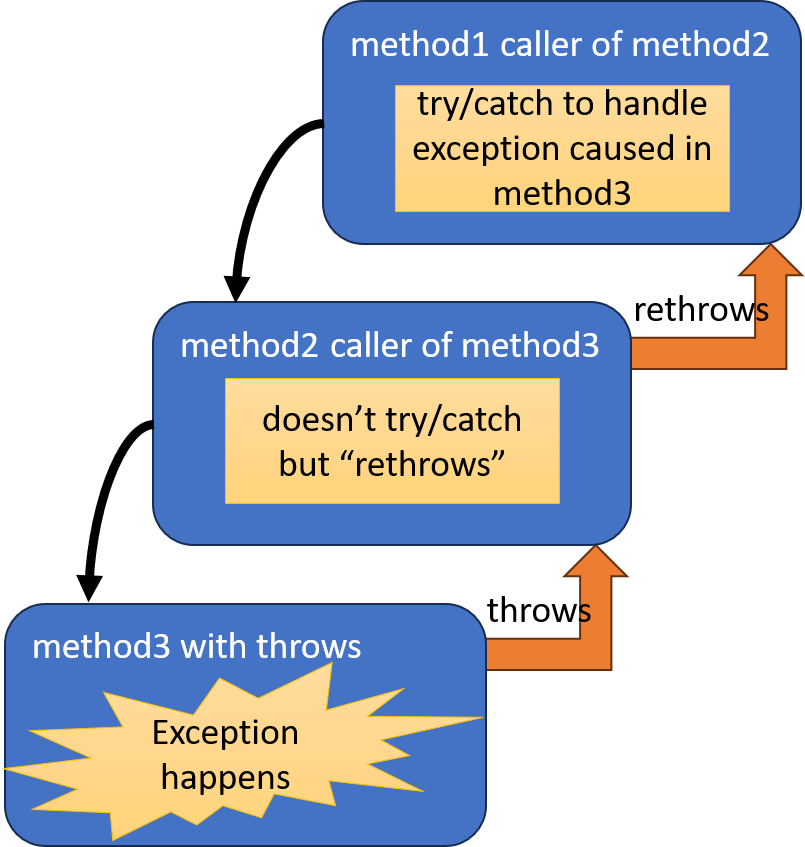Throwing
Data Types and Exceptions in Java

Jim White
Java Developer
Handling options
- Checked exceptions require "handling"
- "Handling" runtime exceptions is optional
- Two options for "handling"
- Use a try and catch to capture the
Exceptionand write code to address the issue - "Throw" the exception
- Use a try and catch to capture the
- Try/catch is preferred means to handle an exception
- Not always possible and sometimes better to consolidate exception handling
Throws keyword
- Use
throwson any method to pass the exception back to the calling method- Versus handling the exception in the method
- Called "throwing an exception" or "passing-the-buck"
- Passing the responsibility for handling the exception to a caller
- Use a comma separated list of exception types after
throws- Indicates what types of exceptions the caller method might anticipate
public static void someMethod() throws IndexOutOfBoundsException,
NegativeArraySizeException, NullPointerException {
// method code
}
Throws example
Normal try-catch to handle an Exception
public static void main(String[] args) {
someMethod();
}
public static void someMethod(){
try {
ArrayList<String> games
= new ArrayList<String>();
games.add("Monopoly");
games.add("Chess");
games.get(3);
} catch (IndexOutOfBoundsException e) {
System.out.println(
"Oops - trying to get non-existent item");
}
}
Throws to handle an Exception
public static void main(String[] args) {
try {
someMethod();
} catch (IndexOutOfBoundsException e) {
System.out.println(
"someMethod tried to get non-existent item");
}
}
public static void someMethod()
throws IndexOutOfBoundsException {
ArrayList<String> games
= new ArrayList<String>();
games.add("Monopoly");
games.add("Chess");
games.get(3);
}
When to use throws
- "Passing-the-buck" or throwing an exception is something we try to avoid
- Better practice is, usually, to try-catch exceptions where they happen
- Reasons for throwing rather than using try-catch include:
- The method where the exception occurs may not know how to recover
- Centralizing the handling to reduce redundant try/catch handling code

1 Photo from https://unsplash.com/@philipparosetite
Catch and rethrow
- An
Exceptioncan be "rethrown"- A calling method also calls throws instead of having a try/catch
- Rethrowing from
mainwill cause the application to stop

Rethrowing example
public class RethrowExample {
public static void main(String[] args) {
try {
method1(0);
} catch (ArithmeticException e) {
System.out.println("Oops - tried a bad quotient");
}
}
public static void method1(int divisor) throws ArithmeticException {
method2(divisor);
}
public static void method2 (int divisor) throws ArithmeticException {
int z = 5/divisor;
System.out.println(z);
}
}
Let's practice!
Data Types and Exceptions in Java

